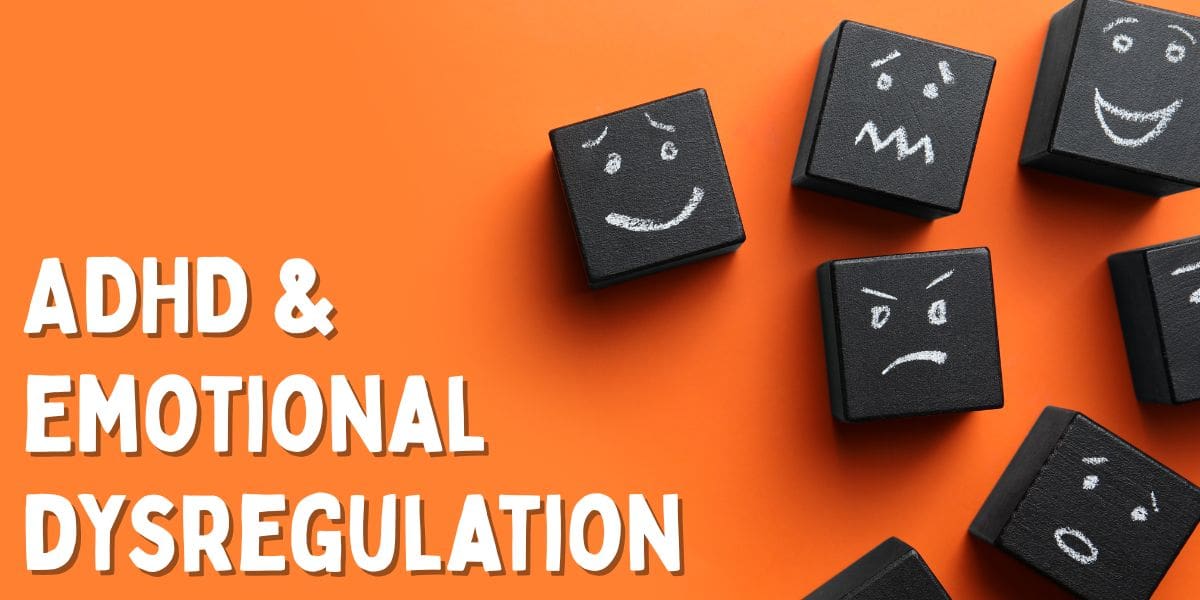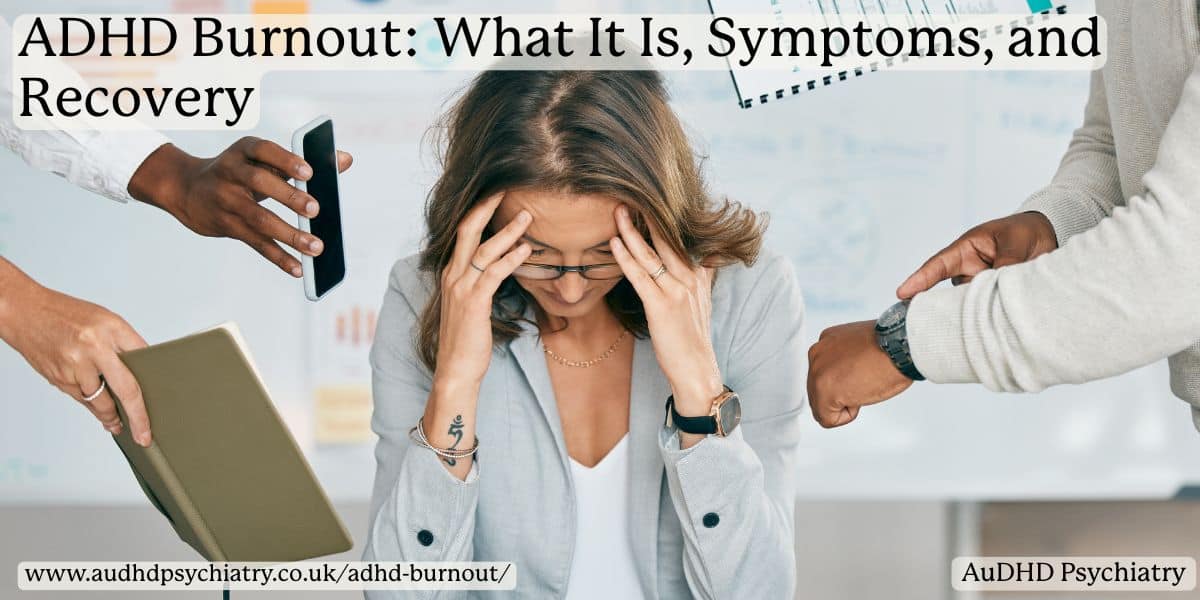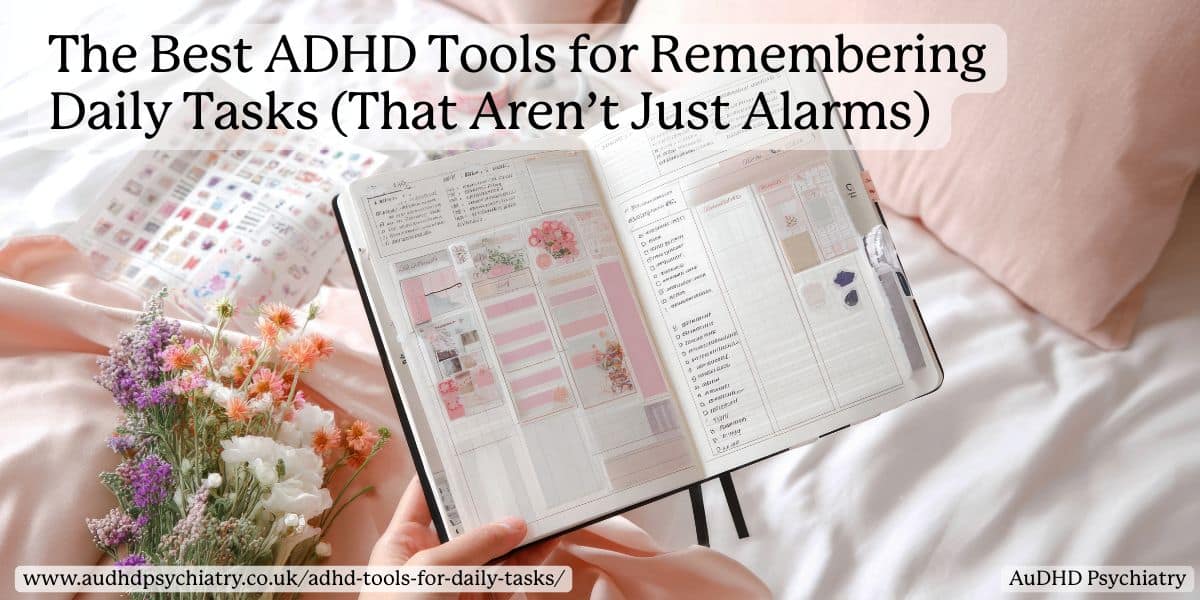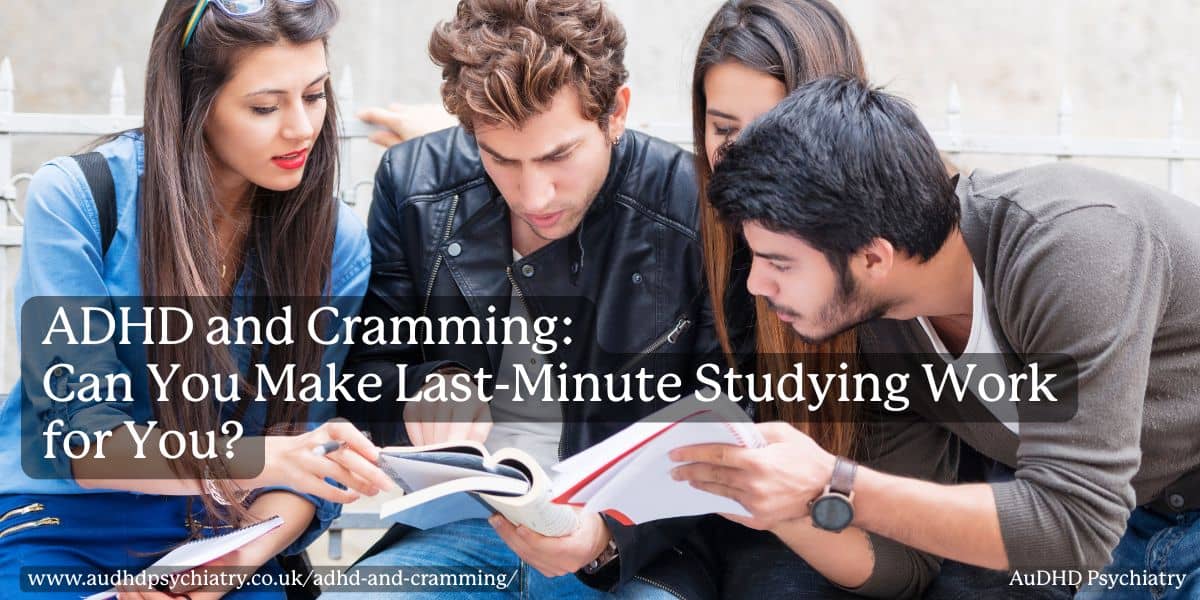
Ever felt like your emotional reactions hit harder or last longer than they should? For many people with ADHD, these intense emotional reactions are not only common. They’re part of the condition itself.
Those with attention deficit hyperactivity disorder (ADHD) experience challenges in managing intense emotions, from frustration that builds in seconds to sudden tears or emotional outbursts that feel impossible to control. These are not mood swings and not necessarily signs of a separate condition. They’re often the result of how the ADHD brain processes stimulation, stress, and internal signals.
In this guide, we’ll explain emotional dysregulation, how it manifests in everyday life, and why people with ADHD may have a more challenging time resolving emotional triggers. You’ll also find practical strategies, treatment options, and tools to help regulate emotions.
If you’re navigating adult ADHD, parenting a child with outbursts, or just trying to make sense of your reactions, keep reading for a closer look at how emotional regulation works in ADHD and how you can start to take control of it.
What Is Emotional Dysregulation in ADHD?
Emotional dysregulation involves challenges in controlling and expressing emotions in ways that align with social norms and adapt to different situations. As seen in individuals with Attention Deficit Hyperactivity Disorder (ADHD), emotional dysregulation is a prevalent yet often overlooked aspect of the condition. While not officially listed as a core symptom in diagnostic manuals, it is widely acknowledged by clinicians and researchers as a common symptom of ADHD.
The ADHD brain often exhibits executive dysfunction, impacting areas responsible for impulse control, attention regulation, and emotional responses. This dysfunction can lead to challenges in emotion regulation, making it difficult for individuals to modulate their emotional reactions appropriately. For example, a minor inconvenience might trigger an intense emotional response, for example anger or frustration, disproportionate to the situation.
Neurobiologically, these challenges are linked to atypical functioning in brain regions including the amygdala and prefrontal cortex, which play crucial roles in processing emotions and exerting top-down control over emotional responses. Such an imbalance may result in heightened emotional reactivity and difficulty returning to a baseline emotional state after an upset.
Understanding emotional dysregulation as part of the ADHD symptomatology is essential for accurate diagnosis and effective intervention. It emphasises the value of comprehensive assessments that consider emotional and behavioral symptoms.
For those seeking evaluation, our guide on how to get tested for neurodivergence provides a step-by-step overview of the assessment process. Recognising and addressing emotional dysregulation can lead to better management strategies, improving daily functioning and overall quality of life for individuals with ADHD.
ADHD Emotional Dysregulation Symptoms
Emotional dysregulation in ADHD manifests through various behaviours and emotional responses that may seem disproportionate to the triggering events. These manifestations can significantly impact interpersonal relationships, academic performance, and occupational functioning.
General ADHD Emotional Dysregulation Symptoms
Common examples include sudden emotional outbursts, such as intense anger or frustration over minor issues, and episodes of crying without an apparent cause. Individuals may experience strong emotions that escalate quickly and are challenging to control, reflecting low frustration tolerance and heightened emotional reactivity.
Impulsive behaviors are also characteristic, where individuals might act on emotional impulses without considering the consequences, leading to actions they later regret. This impulsivity is closely tied to the executive function deficits commonly observed in ADHD.
Another example is the difficulty in calming down after an emotional episode. Once triggered, individuals may remain in an elevated emotional state for extended periods, affecting their ability to engage in daily activities. This prolonged emotional experience can lead to exhaustion and further impair functioning.
ADHD and Emotional Dysregulation in Social Settings
In social contexts, emotional dysregulation may result in misunderstandings, as peers or colleagues might misinterpret the intensity of emotional responses. This can strain relationships and contribute to feelings of isolation or rejection.
For parents and caregivers, recognising these patterns in children is crucial. Recognising and addressing the long-term impacts of emotional dysregulation can help reduce its long-term effects. Our article on private child ADHD assessment offers insights into evaluation options and considerations.
Understanding these examples underscores the importance of comprehensive ADHD management plans that address both cognitive and emotional components, facilitating better outcomes for those affected.
Is Emotional Dysregulation a Symptom of ADHD or Something Else?
Emotional dysregulation is increasingly recognised as a core aspect of ADHD despite not being formally listed in the Diagnostic and Statistical Manual of Mental Disorders (DSM-5). This has led to ongoing debate among clinicians about whether emotional dysregulation should be added to the formal diagnostic criteria for ADHD. Many professionals argue that the exclusion overlooks one of the most impairing elements of the condition, particularly in adults.
While symptoms like inattention and impulsivity are central to an ADHD diagnosis, the emotional side of the condition is just as significant. Many individuals report frequent mood shifts, difficulty calming down, and emotionally dysregulated responses that feel out of proportion. These challenges often reflect a breakdown in emotional regulation: how we identify, process, and respond to internal emotional cues.
Importantly, emotional dysregulation is not unique to ADHD. It also appears in conditions like borderline personality disorder, autism spectrum disorder, and mood disorders. However, in ADHD, the dysregulation tends to be fast-moving, reactive, and closely linked to executive dysfunction and stimulus sensitivity.
Because of this diagnostic overlap, misdiagnosis is common. For example, some individuals are incorrectly diagnosed with depression or anxiety when the root issue is untreated ADHD dysregulation.
A thorough assessment is essential. If you want to explore whether your own experiences or those of someone you care about align with ADHD symptoms, consider taking our online ADHD screening test as a first step.
What Triggers ADHD Emotional Dysregulation?
ADHD emotional dysregulation often feels unpredictable, but research shows that certain brain mechanisms and environmental factors are consistent triggers. Understanding these root causes can help individuals better anticipate emotional responses and apply proactive strategies.
Neuroscience offers valuable insights. An overactive amygdala, responsible for detecting threat, can lead to heightened emotional reactivity in ADHD.
Paired with an underactive prefrontal cortex, which helps regulate responses and plan behaviour, this imbalance makes it harder to control intense emotional states. Other primary brain regions involved in emotion regulation, such as the anterior cingulate cortex, also show atypical activity in those with ADHD.
Physiological symptoms often accompany these neurological patterns. Rapid heart rate, increased muscle tension, and shallow breathing can appear during dysregulated states. These physical reactions are common in stressful situations and may amplify the emotional state even further.
Triggers include sensory overload, negative feedback, transitions between tasks, and perceived rejection. For some, emotional dysregulation may also be intensified by lack of sleep, hunger, or a disrupted daily routine. ADHD emotional sensitivity means even minor slights can feel overwhelming, and tears or emotional outbursts may occur unexpectedly.
Social settings can also be triggering. For children in classrooms or adults in the workplace, feeling misunderstood or dismissed may spark an outburst or emotional withdrawal. These reactions are not manipulative. They reflect how the ADHD brain responds to perceived pressure or disconnection.
Familiarising yourself with your triggers is the first step in managing ADHD dysregulation. Developing personalised coping strategies, which we will cover in later sections, can help bring awareness and calm to situations before they escalate.
Emotional Dysregulation Signs in Children and Adults
Emotional dysregulation doesn’t always look the same across ages. In children with ADHD, signs may include sudden outbursts, intense crying spells, or difficulty recovering from disappointment. In adults, the symptoms often show up as mood volatility, impulsive reactions in conversations, or emotional withdrawal after conflict. Recognising these behaviours early can lead to more effective ADHD treatment and support.
How It Manifests in Children
Children with ADHD and emotional dysregulation may become overwhelmed by tasks other children navigate easily. A missed turn during play or an unexpected change in routine may trigger an emotional meltdown. These reactions are often misunderstood as behavioural problems, but they reflect an ADHD brain struggling with executive functioning and emotional control.
Chronic stress in school environments can exacerbate these reactions. Teachers may notice the child has a hard time calming down, shifting tasks, or expressing frustration appropriately.
How It Appears in Adults
In adults, signs of emotional dysregulation are often misattributed to personality traits or stress. Emotional pain may surface as irritability, tearfulness, or shutting down during emotionally charged situations. These reactions may stem from a lifetime of masking ADHD symptoms or mismanaging intense emotions without the right support.
Whether it’s difficulty regulating anger, disproportionate reactions to setbacks, or lingering frustration, these behaviours often reflect deeper patterns linked to the ADHD brain.
How ADHD Emotional Dysregulation Impacts Life
Recognising the symptoms of ADHD and emotional dysregulation is only the first step. To fully understand its impact, we need to examine how these emotional challenges affect day-to-day life, from relationships and work to education and mental health.
In Relationships: Intense Feelings and Miscommunication
ADHD emotional dysregulation often leads to significant challenges in close relationships. People with ADHD may experience intense feelings that escalate quickly, particularly during arguments or stressful moments. What begins as a minor disagreement may turn into a full emotional outburst, driven by impulsivity and rejection sensitivity.
This tendency to become emotionally overwhelmed can create misunderstandings between partners, friends, or family members. Without strong emotional awareness or regulation tools, individuals may shut down, lash out, or withdraw entirely. The result is often emotional distance, even when the core issue is the ADHD brain’s difficulty filtering and processing emotional stimuli.
In romantic partnerships, feeling emotionally dysregulated may be mistaken for being emotionally volatile or insensitive. That’s why recognising emotional patterns is critical. It allows both partners to communicate more effectively and avoid cycles of conflict.
For support, consider working with an ADHD-informed relationship coach or therapist. You can also explore this guide on ADHD resources and tools for strategies that strengthen communication and reduce emotional tension.
In the Workplace
In professional settings, emotional dysregulation can affect everything from task performance to coworker dynamics. People with ADHD may face workplace difficulties when receiving constructive criticism, especially if their sensitivity to feedback is high.
When impulsive reactions override an appropriate response, it may lead to awkward interactions, strained team dynamics, or decreased confidence. Missed deadlines or perceived emotional volatility can reinforce stigma or reduce opportunities for advancement.
Learning stress management techniques is vital here. Cognitive strategies such as mindfulness or brief breathing exercises between tasks can improve regulation and concentration. You’ll find relevant workplace tools in our guide on how to manage ADHD in the workplace.
In Education
ADHD children and teens are especially vulnerable to emotional dysregulation in academic settings. Whether it’s school-related stress, sensory overwhelm, or difficulty switching between tasks, the result is often academic struggles and behaviour deemed “disruptive.”
Outbursts, tearful reactions, or shutdowns are sometimes the only emotional expressions available to a child who has yet to develop regulation strategies. Teachers and SENCO teams may misinterpret this as defiance or inattention rather than a symptom of executive dysfunction.
Building structured support, including predictable routines and clear emotional boundaries, can make a big difference.
On Mental Health
Unmanaged emotional dysregulation can increase the risk for comorbid mental health conditions. Studies show links between ADHD and anxiety disorders, depression, and even substance abuse, especially when emotional needs are unmet for long periods.
Self-destructive behaviours, including negative self-talk or emotional withdrawal, may become coping mechanisms in the absence of healthy alternatives. This emotional reactivity puts strain not just on relationships and work, but on self-esteem and long-term well-being.
Seeking early support, building self-regulation skills, and addressing emotional triggers can reduce the likelihood of emotional exhaustion. If you’re concerned about your experiences and your mental health, don’t hesitate and reach out for professional help.
Treatment Options: How to Manage ADHD Emotional Dysregulation
Managing ADHD and emotional regulation often requires a multifaceted approach. Effective ADHD treatment typically combines medication with therapeutic interventions to address both core symptoms and emotional regulation challenges.
Medication for Emotional Dysregulation
Pharmacological treatments can greatly help in managing ADHD symptoms. Stimulant medications, for example, methylphenidate and amphetamines, are commonly prescribed to enhance attention and reduce impulsivity. For individuals who may not tolerate stimulants well, non-stimulant options such as atomoxetine are available.
While ADHD medications primarily target attention and hyperactivity, they can also indirectly aid in emotional regulation by improving overall executive functioning.
Therapeutic Interventions
Cognitive Behavioral Therapy (CBT) is a well-recognised method for addressing emotional dysregulation. CBT helps individuals recognise negative thought patterns and start developing coping strategies to manage ADHD and emotions.
Dialectical Behaviour Therapy (DBT), originally developed for borderline personality disorder, has been adapted for ADHD treatment. DBT focuses on teaching skills like mindfulness, distress tolerance, and emotional regulation, which are particularly beneficial for those struggling with emotional dysregulation.
When to Seek Professional Help for Emotional Dysregulation
Not all emotional dysregulation can be managed with lifestyle changes and support alone. If intense emotional reactions are affecting your relationships, work, or safety, it may be time to seek clinical support.
Therapy for emotional regulation can offer personalised guidance, especially when coping strategies are no longer enough. A mental health professional can also be asked to assess for co-occurring conditions such as anxiety or depression, which often complicate ADHD symptom management. If you suspect ADHD may be contributing to these challenges, consider booking an private ADHD assessment in Glasgow for a structured and accurate diagnosis.
If you or someone you care for is experiencing ongoing distress, mood swings that disrupt daily life, or feelings of hopelessness, it’s important to reach out for help. Early access to mental health services can make a significant difference in outcomes.
Support is available, and recovery starts with the first step: acknowledging that you don’t have to figure out how to regulate emotions with ADHD alone.
Coping Strategies for Emotional Dysregulation in ADHD
Beyond formal treatment, developing personal coping strategies is essential for managing emotional dysregulation associated with ADHD. These strategies can be categorised into core tools and daily lifestyle practices. Working with expert ADHD coaching can also provide tailored guidance, helping you identify triggers and build practical routines for better regulation.
Core Tools for Emotional Regulation
- Pause and Breathe: Taking a moment to pause and focus on breathing can help interrupt escalating emotional responses.
- Emotional Labelling: Identifying and naming emotions can reduce their intensity and provide clarity on how to respond appropriately.
- Reframing Situations: Challenging negative thoughts and viewing situations from different perspectives can decrease emotional reactivity.
- Adaptive Strategies: Implementing techniques like journaling or using emotion regulation apps can help you track emotional patterns and responses.
Daily Lifestyle Strategies
While tools like CBT and DBT are valuable, lifestyle habits can also play a powerful role in supporting emotional regulation. These day-to-day practices help stabilise mood, reduce reactivity, and build long-term resilience, especially when integrated into a consistent routine:
- Deep Breathing: Regular practice of deep breathing exercises can promote relaxation and reduce stress.
- Adequate Sleep: Ensuring sufficient rest is vital, as sleep deprivation can exacerbate emotional instability.
- Healthy Coping Mechanisms: Engaging in activities like exercise, listening to music, or spending time in nature can serve as effective outlets for emotional energy.
- Support Groups: Joining ADHD support groups provides a sense of community who have shared experiences, offering additional coping strategies and emotional support.
- Mindfulness Techniques: Meditation and yoga can enhance self-awareness and emotional regulation skills.
Incorporating these strategies into daily routines can significantly improve emotional well-being for individuals with ADHD.
Helping a Loved One With ADHD and Emotional Dysregulation
Supporting someone with ADHD and emotional dysregulation involves understanding, patience, and proactive engagement. Here are effective strategies to assist your loved one.
Encouraging Self-Regulation Tools
Introduce tools and techniques that promote self-regulation. This can include suggesting the use of emotion tracking apps, mindfulness practices, or structured routines to help manage daily tasks and emotional responses.
Providing Emotional Support
Offer a non-judgmental space for your loved one so they can freely express their feelings. Active listening and validating their experiences can strengthen your relationship and provide comfort during challenging times.
Promoting Professional Help
Encourage seeking professional assistance when necessary. You can help them explore top private ADHD assessment services for accurate diagnosis and support.
Joining Support Groups
Getting involved in active support groups can be beneficial for both individuals with ADHD and their families. These groups offer shared experiences, coping strategies, and a sense of community.
For more resources and guidance, our article on ADHD resources and tools provides comprehensive information to support both individuals with ADHD and their loved ones.
Conclusion: Living With ADHD and Emotional Dysregulation
Emotional dysregulation remains one of the most misunderstood aspects of ADHD, especially in adults. Whether you’re frequently emotionally dysregulated, cry easily, or find yourself overwhelmed by minor stressors, these emotional responses are not a personal failing. They reflect how the ADHD brain processes and reacts to internal and external demands.
In the UK, growing awareness around ADHD emotional sensitivity and support services is helping individuals gain access to better tools and treatment. If these emotional struggles are affecting your relationships, work, or mental health, it’s important to know that help is available.
Effective ADHD treatment involves not just managing symptoms, but also learning how to regulate emotions over time. With the right support, these emotional challenges can become more manageable.
If you’re ready to take the next step, book a private ADHD assessment with our team of experts to explore individualised treatment and long-term strategies that work for you.
References:
[1] Shaw, P., Stringaris, A., Nigg, J., & Leibenluft, E. (2014). Emotion Dysregulation in Attention Deficit Hyperactivity Disorder. American Journal of Psychiatry, 171(3), 276–293. https://doi.org/10.1176/appi.ajp.2013.13070966
[2] Tiah, T. M. (2013). Predictability of ADHD Behavioral Symptoms: A Follow-Up Examination in At-Risk Preschool Children. https://core.ac.uk/download/pdf/228638978.pdf
You Might Also Like
Contact Us
We’re here to answer any questions you might have.
Get in Touch
Opening Hours
Contact Form
We’re here to help. Reach out and we’ll get back to you within 24 hours (Monday – Friday).



